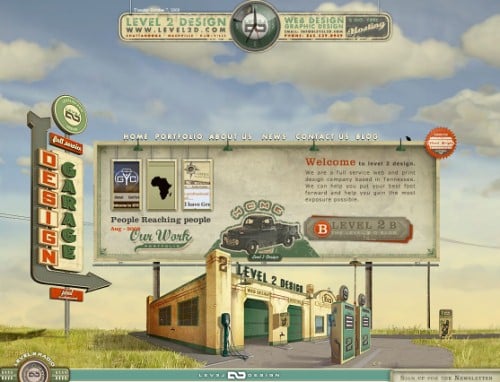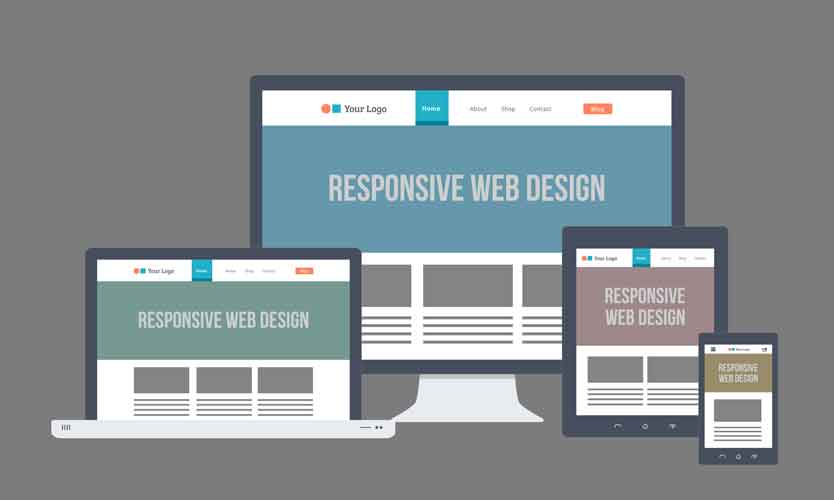In The Beginning
what makes websites attractive? A website is typically the initial point of contact between a company or organization and the people it is trying to attract in this day and age due to the prevalence of the internet. It acts as a storefront, a platform for discussion, and a source of knowledge all in one virtual location. The layout of a website is one of the most important factors in drawing in new visitors and keeping the ones you already have. In this piece, we will discuss the fundamental elements that contribute to the aesthetic appeal and usability of websites, such as page layout, color schemes, navigation, content, and a variety of other elements. Find what makes your website look attractive here.

Layout and Structure
The design and organization of a website are two of the most important factors that contribute to its overall appeal. Visitors will have an easier time finding what they are searching for and navigating through the information if the layout has been carefully thought out and arranged. The following are some important factors to take into consideration:
1. Responsive Design
A responsive design is essential in this day and age of mobile devices such as smartphones and tablets. Websites that can adjust to different screen widths offer a more seamless experience for their users. Users value having the option to view a website on any device, without having to make concessions in terms of functionality or aesthetics.
2. Intuitive Navigation
The navigation menus should not be complicated and should be easy to understand. Users should have little trouble locating the most important pages and material on the site. A user-friendly interface is one that displays menus at a predetermined location and organizes information in a way that makes sense to the user.
3. White Space
The attractiveness of a website relies heavily on the strategic application of white space, often known as negative space. It allows the material to have more breathing room, which makes it easier to read and more visually appealing. Visitors may become overwhelmed and leave if the layout is disorganized and cluttered.
Color Schemes and Visual Appeal
When it comes to the design of websites, colors are of critical importance. They have an effect on the user’s feelings and the way they perceive the world. The following is an explanation of how color schemes contribute to the appeal of websites:
4. Consistency
It is crucial, while developing a coherent and professional appearance for a website, to use colors consistently throughout the entirety of the page. Both recognition and trust in a brand can be bolstered by using a color palette that has been thoughtfully selected and is congruent with the business’s identity.
5. High-Quality Images and Graphics
Images and graphics should have a good quality in order to improve the site’s overall appearance and appeal to the eye. Images that are grainy or pixelated might make the user experience less enjoyable in its entirety. The utilization of imagery that is congruent with the aim of the website and the audience that it intends to attract is essential.
6. Contrast and Readability
Readability is directly impacted by the contrast between the colors of the text and the background. It is of the utmost importance to check that the text can be seen readily against its background. To improve readability, you might want to think about placing dark text on a light backdrop or vice versa.
Content Quality and Relevance
When it comes to attracting and keeping visitors, the content is more important than anything else. The quality and relevancy of the content are both affected by the following elements:

7. Engaging Headlines
Users are drawn in and encouraged to investigate further if the headlines (H2 tags) are interesting and compelling. Headlines that have been skillfully produced should be brief, descriptive, and should capture the reader’s interest.
8. Informative and Valuable Content
Websites that consistently provide articles that readers find interesting and useful are more likely to be trusted as sources of information. This, in turn, stimulates repeat visitors and increases the likelihood of recommendations from word of mouth.
9. Consistency in Tone and Voice
The brand of the website and the people who are intended to read the information should both be reflected in the website’s tone and voice. Users are more likely to connect with the message and purpose of the website if the voice of the website is consistent.
User-Friendly Features
The overall experience of using the website is improved, as is its attractiveness, by the inclusion of features that are user-friendly. The following are some significant factors to take into consideration:
10. Fast Loading Speed
Users become more irritated by websites that load slowly. Improving a website’s loading times is an essential step in retaining visitors. Common ways to enhance loading speed include compressing pictures, making use of browser caching, and reducing the number of queries made to the server.
11. Contact Information and CTA
Users of a website ought to have an easy time getting in touch with the website’s owner or the company. Including contact information and clear calls to action (CTA), such as email addresses or contact forms, helps to develop trust and stimulates interaction.
12. Search Functionality
A search function is a very useful feature for websites that include a large amount of content. It makes it easier for consumers to discover the information they’re looking for, which ultimately makes the site more user-friendly.

Social Proof and Trust-Building Elements
Establishing credibility with website visitors is a crucial step. The following are some factors that can play a role in establishing trust:
13. Testimonials and Reviews
The presentation of genuine testimonials and evaluations written by contented users or customers is an effective way to develop trust. Customers are reassured and provided with social proof through the use of testimonials.
14. Security and Privacy Information
It is essential for websites that deal in e-commerce or deal with sensitive data to communicate their privacy policies and security measures in a clear and concise manner. Visitors must have the assurance that the confidentiality of their personal information will be maintained.
15. Social Media Integration
The incorporation of social media connections and feeds into the website provides users with the opportunity to connect with the business across numerous platforms. Additionally, it displays that the brand is active and engaged in the community that is found online.
Conclusion

An interesting and appealing website is a significant tool for retaining users and attracting new ones. The overall appeal of a website is affected by many factors, including its design, color schemes, the quality of its information, features that are user-friendly, and characteristics that build trust. You’ll be able to design a website that not only draws the attention of visitors but also compels them to return again and again if you give these considerations the careful attention they need. Keep in mind that a website is considered attractive when it is not only aesthetically pleasing, but also when it is functional, informative, and, most importantly, user-focused.




